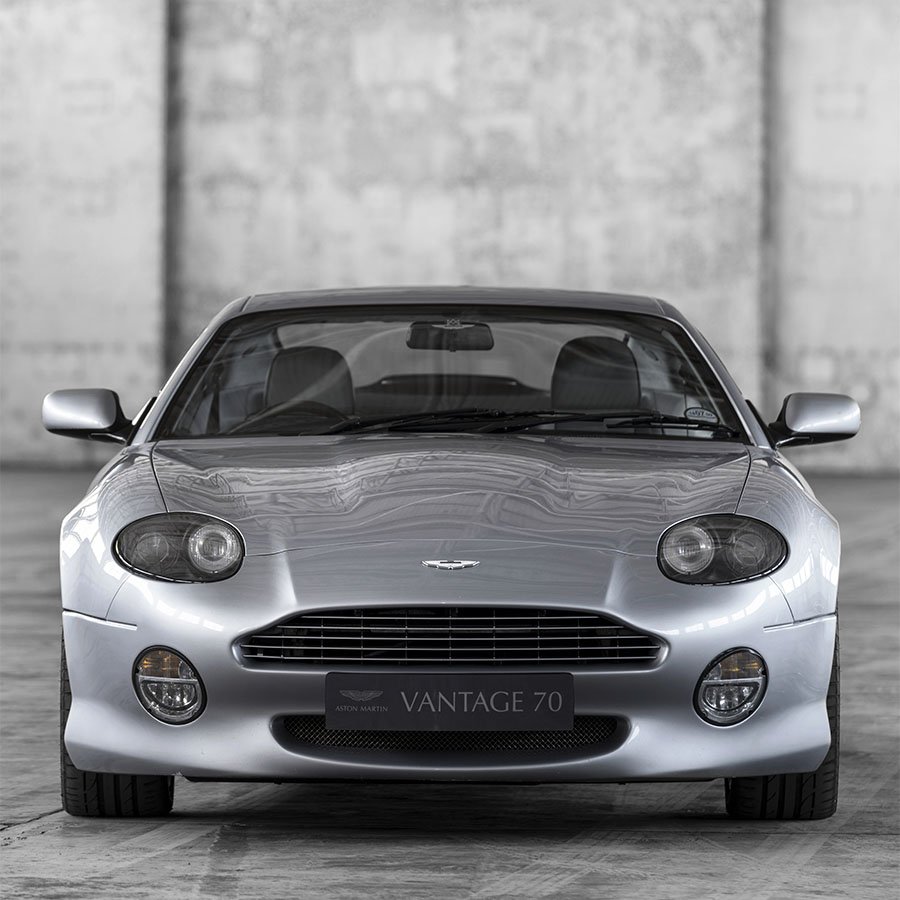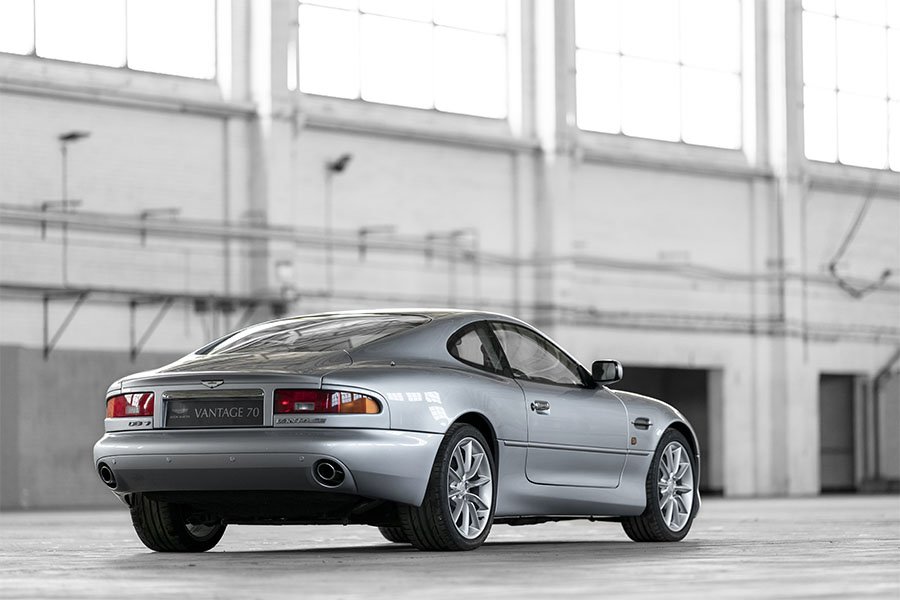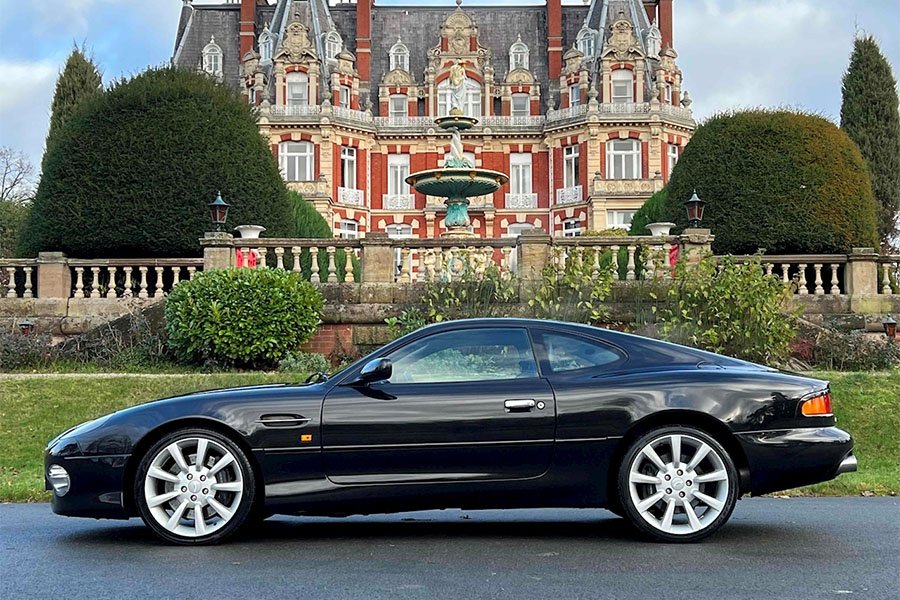Guide: Aston Martin DB7 Vantage - a Historical & Technical Appraisal
/BACKGROUND
At the Geneva Motor Show in March 1993, Aston Martin unveiled two of the most significant pieces of machinery in its history.
Unsurprisingly, the gorgeous straight six-powered DB7 stole all the headlines. However, alongside it was a four-door concept dubbed the Lagonda Vignale which Aston Martin claimed would, if produced, be powered by a new six-litre V12 that was in the early stages of development.
Although any plans to actually built the four-door Lagonda were quickly abandoned, Aston Martin pressed on with its proposed V12 as a replacement for the company’s Tadek Marek-designed V8 which had been around in one shape or another since 1967.
Within five years, the highly anticipated V12 found its way into a fully operational concept dubbed Project Vantage that was displayed at the Detroit Motor Show in January 1998.
The V12 installed under the hood of the Project Vantage was the result of a collaboration with Cosworth Engineering in Northampton. However, although a production version of the Project Vantage was unveiled at Geneva in March 2001 (now rebranded the V12 Vanquish), Aston Martin’s exciting new twelve cylinder motor first made it to production in a more upmarket version of the existing DB7.
The plan to create such a DB7 was rooted in the need to replace the mid-range Virage-based V8 Coupe and Volante which were coming to the end of their production life. Aston Martin would continue to offer the existing straight six-powered DB7 alongside the new V12-powered iteration while the twin supercharged V8 Vantage would remain in production until the V12 Vanquish was ready to replace it.
The resultant DB7 Vantage was presented at the Geneva Motor Show in March 1999 and went into production immediately. It was the first Vantage-badged Aston Martin to feature a completely different engine to the base model; by contrast all previous Vantage-badged Astons had used tuned high output versions of the existing motor.
In addition to its V12 engine, the DB7 Vantage was further enhanced in practically every department.
Although offered at a not insignificant price hike over the six cylinder version, the new model’s arrival resulted in massively reduced demand for the base DB7 which led Aston Martin to withdraw it from the market within four months of the V12’s arrival.
ENGINE / TRANSMISSION
The Type AM702 engine fitted to this latest iteration of the DB7 was a normally aspirated all-alloy 60° V12 with dual overhead camshafts, four valves per cylinder and wet-sump lubrication.
Essentially derived from a pair of Ford Duratec V6s, each engine was built on Aston Martin’s behalf by Cosworth Engineering in Northampton.
Displacement was 5935cc thanks to a bore and stroke of 89mm and 79.5mm respectively.
The electronic management system with multi-point fuel injection and Coil-on-Plug ignition system was supplied by Visteon.
Compression was set at 10.3:1.
In this configuration, peak output was 420bhp at 6000rpm and 400lb-ft at 5000rpm.
For comparison, the six cylinder DB7 produced 335bhp at 5500rpm and 360lb-ft at 3000rpm.
Customers could choose from one of two gearboxes: a Tremec T56 close-ratio six-speed manual or optional ZF 5HP30 five-speed automatic. In addition to its standard setting, the auto ‘box offered a Sport mode which slightly delayed upshifts until further up the rev range.
Transmission was through a single-plate clutch and GKN Powerlock limited-slip differential. A switchable traction control system was fitted as standard.
CHASSIS
Like its smaller-engined sibling, the DB7 Vantage was based on a steel semi-monocoque bodyshell with a 2591mm wheelbase. For this latest application the chassis was suitably modified in order to accommodate the new engine.
Suspension was once again via double wishbones with coil springs and monotube dampers all round. The geometry was revised and the assemblies were beefed up to cope with the extra weight of the new engine. The rear suspension linkages were redesigned to ensure smoother power delivery. Anti-roll bars were fitted at either end.
The brake system was also uprated. Instead of the original 284mm ventilated and 295mm solid discs, the Vantage came with cross drilled and ventilated discs all round: 355mm front and 330mm rear. Four-piston calipers were installed along with the latest four-channel Teves Mk20 anti-lock brake software.
New 18-inch ten-spoke alloy wheels were the same 8-inches wide at the front as before, but increased to 9-inches wide at the back. Bridgestone S02 tyres were fitted as standard along with power steering.
An identical 89-litre fuel tank to the original DB7 was once again installed over the rear axle.
BODYWORK
Externally, the DB7 Vantage was given a mild facelift by Ian Callum who had penned the critically acclaimed original in conjunction with Keith Helfet.
A new front bumper assembly featured larger upper and lower intakes and a new meshed grille. The original brake cooling ducts located in each corner were deleted. Rather than separate side/indicator and fog lights, modern circular three-in-one clusters were fitted.
Down each flank, more aggressively styled sills were added and new exterior mirrors replaced the original type sourced from Citroen.
There was also a subtly re-profiled rear bumper assembly with new central apron and circular instead of oval exhaust shrouds.
Otherwise, the only change was a new Vantage badge added under the right-hand tail light cluster.
Composite panels were used for the nose, front wings, sills, boot lid and rear bumper. The rest of the body was mostly fashioned from steel.
INTERIOR
It was a similar story inside where the DB7 Vantage was equipped with several new features to give the car a mild refresh.
There were new front seats, a new three-spoke steering wheel and a revised centre console with an analogue instead of digital clock. The mix of old and new switchgear included an illuminated starter button and updated Kenwood audio system.
The transmission tunnel console was also subtly revised with a retractable walnut panel to conceal the previously exposed section ahead of the central armrest and a couple of extra switches.
The standard specification included full Connolly leather, alcantara headlining, Wilton carpet, burr walnut cockpit inserts, electric seats, electric windows, electric mirrors, air-conditioning, driver and passenger airbags, an alarm and the aforementioned six speaker Kenwood audio system with six CD shuttle.
Instrumentation comprised a large rev counter and speedometer flanked to the left by smaller read outs for battery condition and fuel. Off to the right were more small gauges for oil pressure and water temperature.
OPTIONS
In addition to an unlimited range of exterior and interior colours, customers could further personalised their DB7 Vantage with a range of optional extras.
Aston Martin offered a premium Alpine audio system with additional speakers, personalised sill plaques, a luggage set, sports seats with perforated inner panels (Coupe only), a fitted umbrella and a variety of alternative cockpit inserts to include carbonfibre, oak, elm, maple, yew and brushed aluminium.
Instead of the standard ten-spoke wheels, two varieties of Dymag magnesium wheel were available: the five twin-spoke Classic design or five single-spoke Sport type.
There was also the aforementioned five-speed automatic gearbox and some buyers had their cars configured with tail lights from the V550 / V600 Vantage.
WEIGHT / PERFORMANCE
Official weight figures saw the manual Coupe quoted at 1780kg (a gain of 30kg), the automatic Coupe at 1825kg (a gain of 25kg), the manual Volante at 1860kg (a reduction of 40kg) and the automatic Volante at 1910kg (also a 40kg reduction).
The manual Coupe had a top speed of 184mph while the auto Coupe and both Volante versions were limited to 165mph.
0-62mph times were 5 seconds for the manual Coupe and 5.1 seconds for the automatic Coupe. Volante figures were a tenth of a second slower.
TOUCHTRONIC GEARBOX OPTION
In early 2000, Aston Martin added a Touchtronic semi-automatic gearbox to the options list.
Developed in conjunction with ZF, the driver could choose from one of three modes: standard automatic, Sport automatic (with upshifts at higher engine speeds) or Touchtronic where shifts could be manually controlled via either the gear lever (by moving it forwards for up or backwards for down) or via steering wheel-mounted plus (+) and minus (-) buttons.
2002 MODEL YEAR CHANGES
For the 2002 model year (available from late 2001), Aston Martin added a number of new upgrades to the options list.
Among them were 19-inch nine spoke wheels with Yokohama tyres, metallic veneer cockpit inserts, an Aston Martin-branded Becker audio system, a CD-based Becker satellite navigation system, coloured brake calipers (red, gold or graphite grey), a tracker and satin finish pedals.
DB7 VANTAGE JUBILEE EDITION
In June 2002, Aston Martin announced a limited run of 50 DB7 Vantage Jubilee Edition cars to celebrate Queen Elizabeth II’s Golden Jubilee.
All 50 cars were finished to an identical specification with special order Jubilee Blue paint, 19-inch nine-spoke wheels, silver brake calipers with blue Aston Martin script, a chromed diamond-pattern mesh grille with Jubilee badge, chrome exterior mirror covers and a sports exhaust.
The cockpit was trimmed in Magnolia upholstery with a Navy Blue upper dash, door tops, rear quarter panels and seat piping. Carpet was Dark Blue and the headliner was Parchment.
Other special interior features included perforated seat centres, Jubilee embossed head rests, Magnolia leather edged floormats with embroidered silver Jubilee logo, dark Italian walnut cockpit inserts, white instrument faces with a silver typeface and a numbered plaque.
Each car also came with a numbered watch and a Navy Blue leather-covered handbook complete with silver logo.
Normally optional equipment fitted as standard included the Touchtronic gearbox, premium audio system, satellite navigation, Tracker, fitted umbrella and satin pedals.
The 24 UK market Jubilee Edition cars were handed over during a sepcial event hosted at Thornbury Castle in Bristol.
DB7 VANTAGE KESWICK EDITION
During 2002, the Lancaster Group in England commissioned a batch of ten DB7 Vantage special editions to retail through their pair of Aston Martin dealerships.
All ten cars (five Coupes and five Volantes) were painted a shade of metallic black offered by Ferrari: Nero Daytona. 19-inch nine-spoke wheels and black brake calipers were also fitted along with bright metal grilles for both front intake apertures.
Upholstery was Charcoal leather with matching carpet and Smoke headliner. The rest of the specification comprised Touchtronic transmission, DB7-embossed headrests and floormats, carbonfibre cockpit inserts and white-faced instruments.
Each car also came with a numbered IWC wrist watch.
2003 MODEL YEAR CHANGES
For the 2003 model year (production of which got underway in late 2002), Aston Martin began to offer a couple of GT features as optional extras on the standard DB7 Vantage.
Handsome five-spoke GT wheels with Bridgestone tyres lent a sportier appearance and GT brakes with grooved discs and silver calipers improved stopping power.
Power-fold exterior mirrors were also introduced.
DB7 VANTAGE ANNIVERSARY EDITION
In spring 2003, Aston Martin announced a DB7 Vantage Anniversary Edition, 100 of which were expected to be built.
Created to to celebrate the DB7’s tenth anniversary and the end of production, each car was painted an identical shade of Slate Blue with graphite grey brake calipers, an egg-crate grille and Power-fold exterior mirrors.
Inside, upholstery was a mix of Caspian Blue and Arctic Blue leather with a grey alcantara headlining and Arctic Blue carpet. The seats had unique fluted centre panels and the steering wheel featured Arctic Blue inserts. Parchment-faced instrumentation was another special featured along with a numbered commemorative plaque located on each sill.
Touchtronic transmission, a premium audio system and satellite-navigation were fitted as standard.
Although Aston Martin had planned to build 100 examples of this limited edition run out special, only 55 were ultimately completed (27 Coupes and 28 Volantes).
END OF PRODUCTION
DB7 Vantage production came to an end in December 2003.
Total production was 4150 units which comprised 2091 Coupes and 2059 Volantes.
Precise figures for left and right-hand drive production in addition to the alternative transmission options are currently unavailable.
The DB7’s replacement, the DB9, was unveiled at the Frankfurt Motor Show in September 2003.
Text copyright: Supercar Nostalgia
Photo copyright: Aston Martin - https://www.astonmartin.com, Fisher Performance Cars - https://www.fisherperformance.co.uk/ & Bonhams - https://www.bonhams.com/












